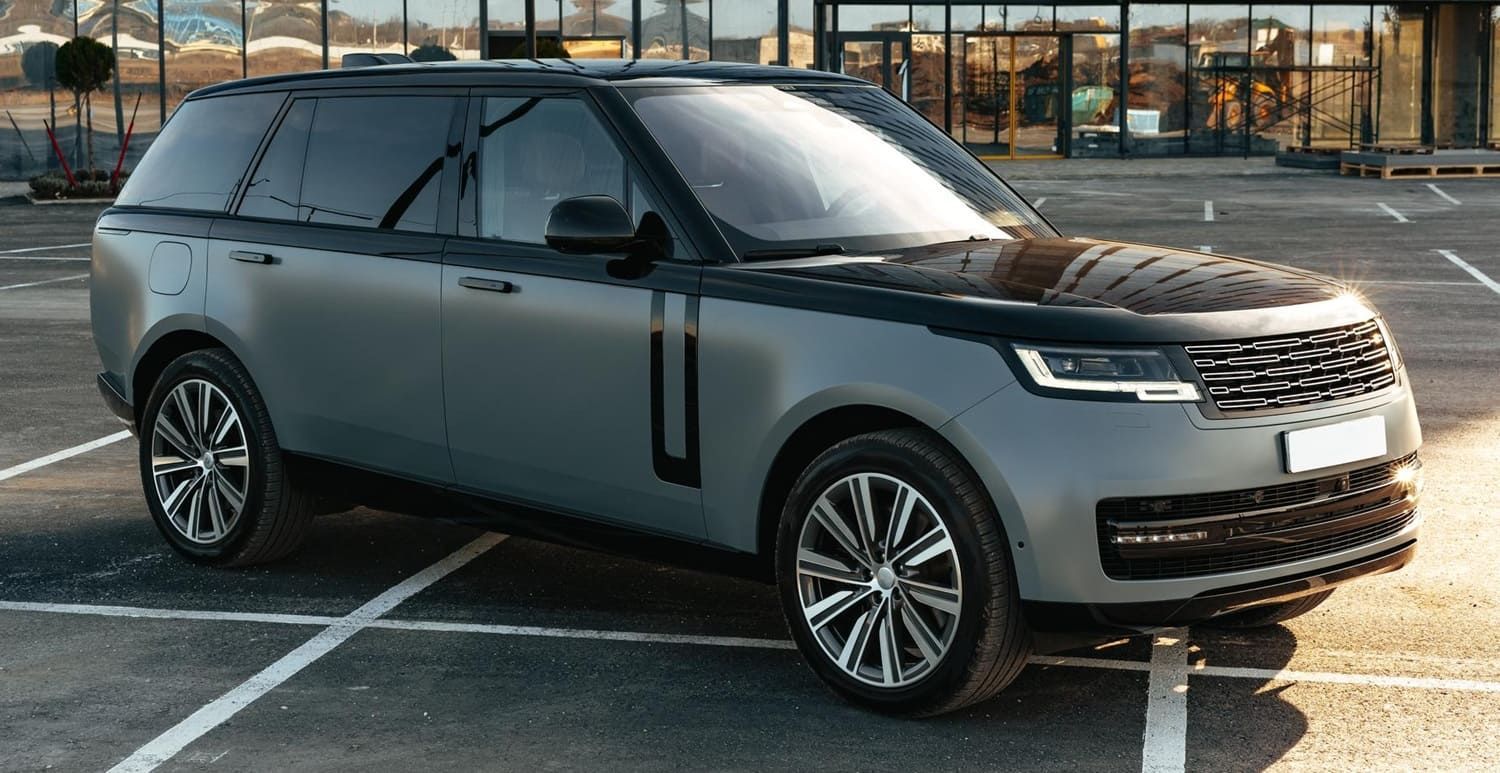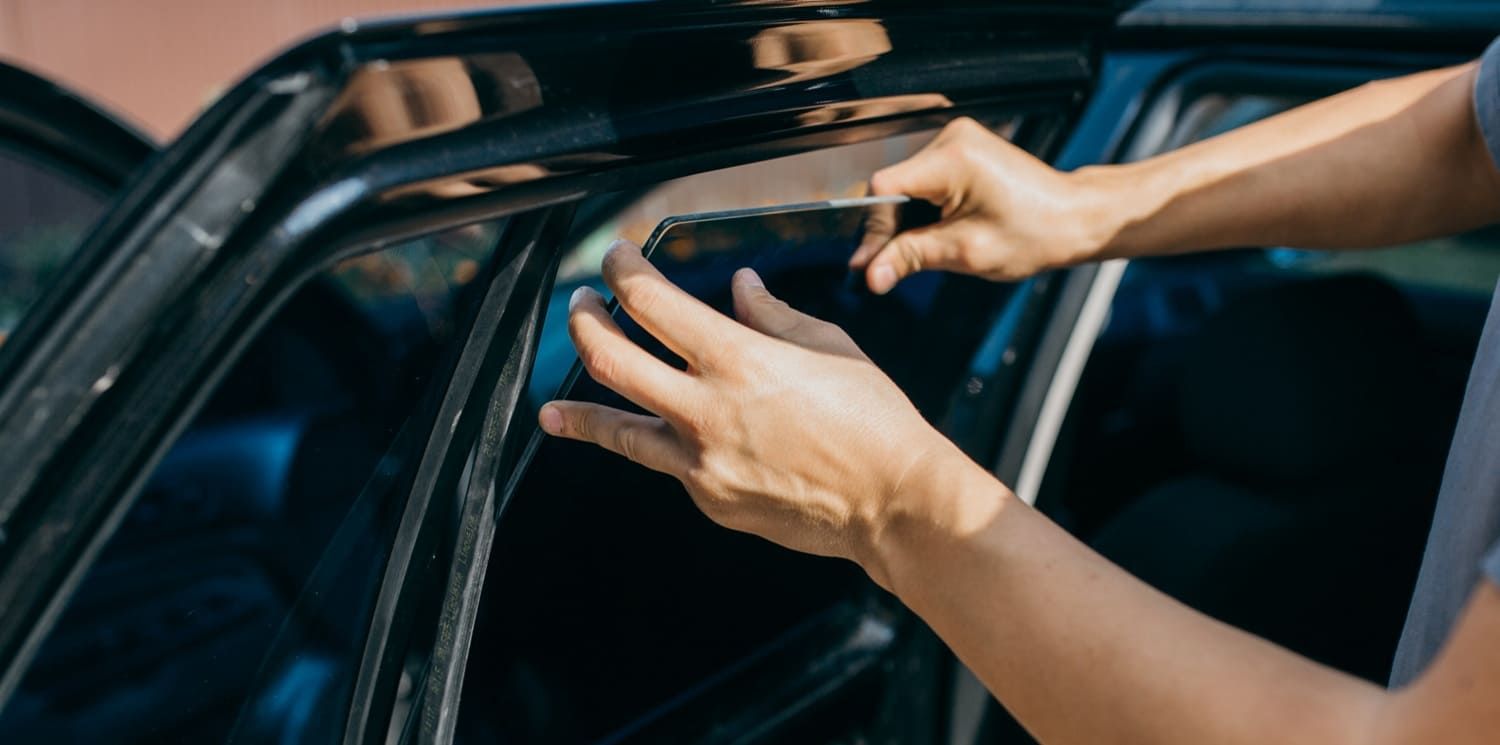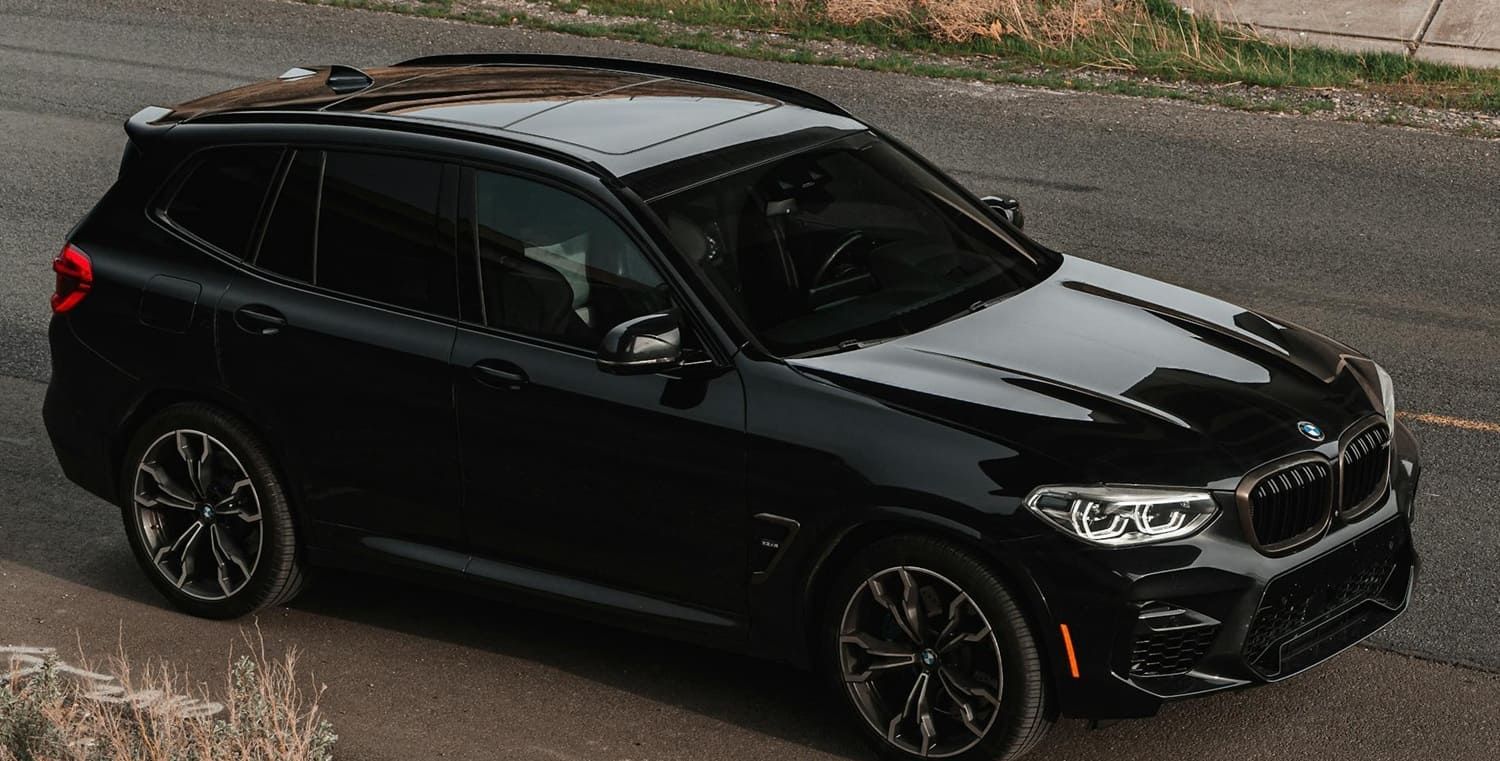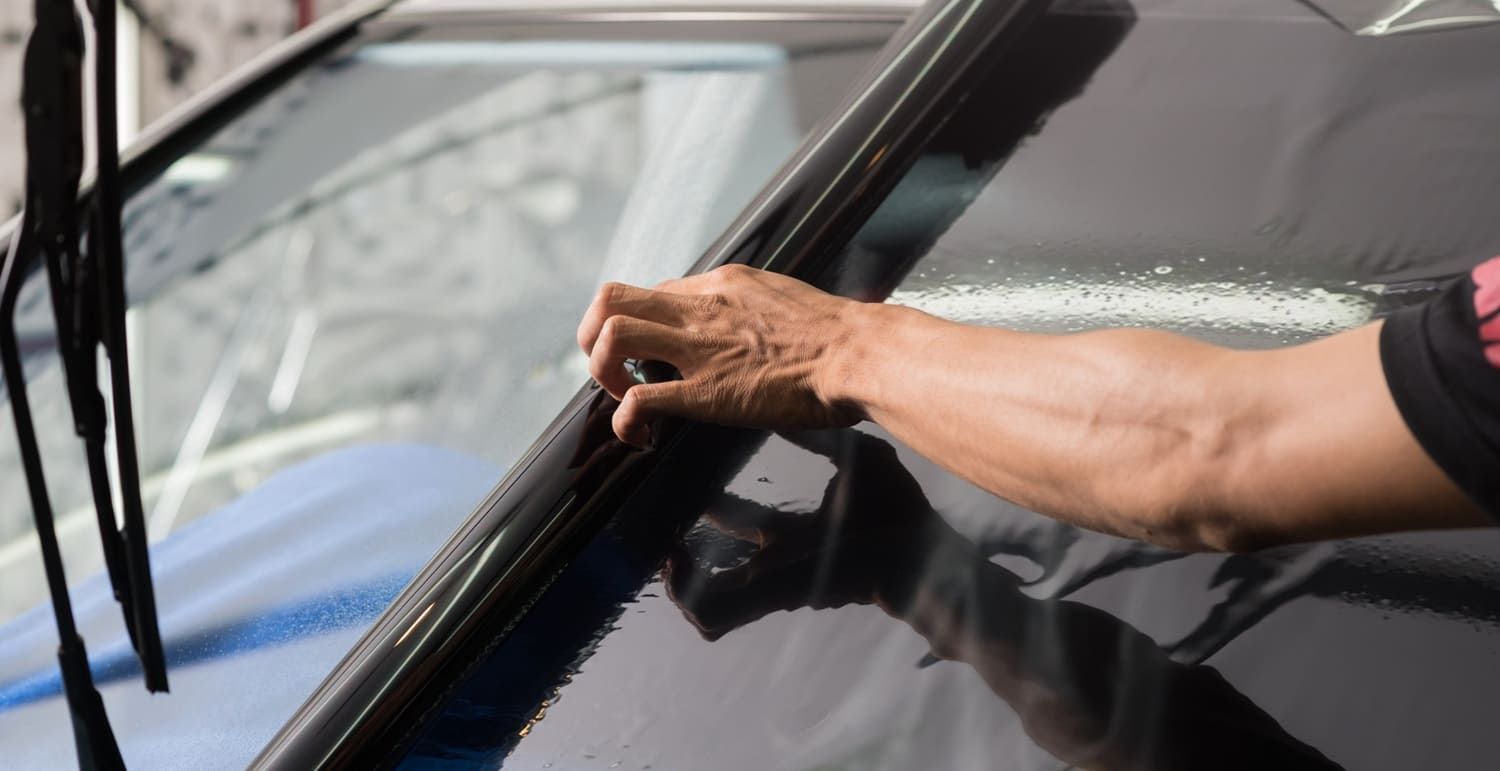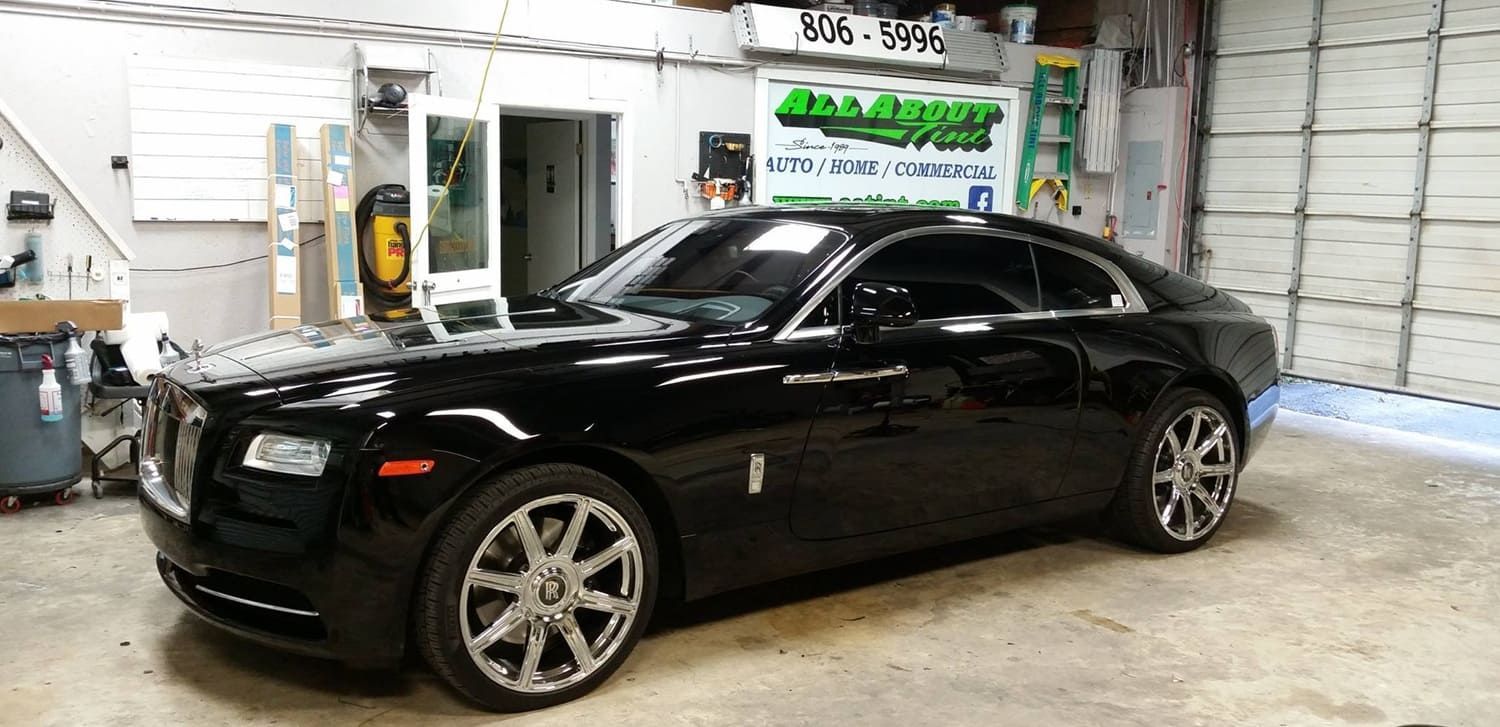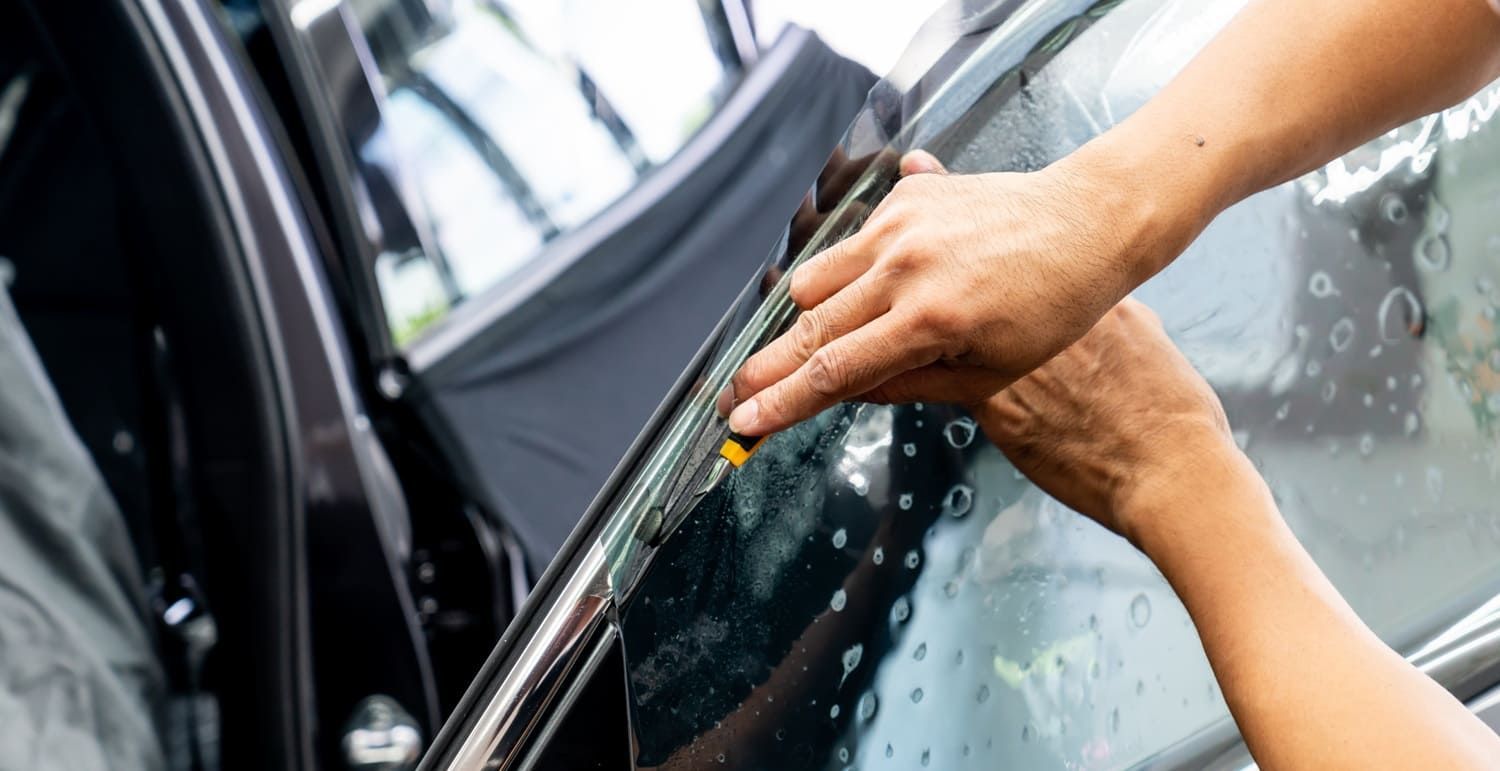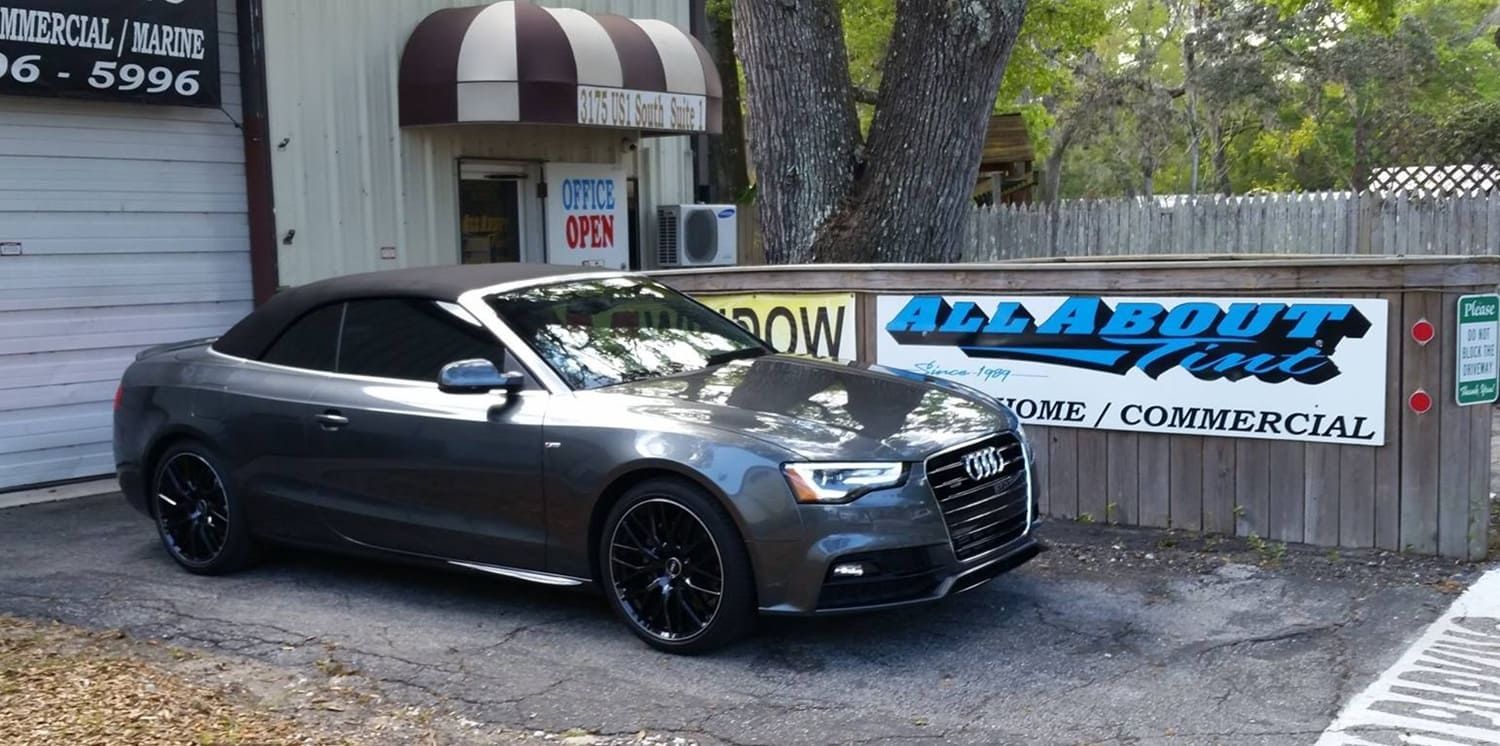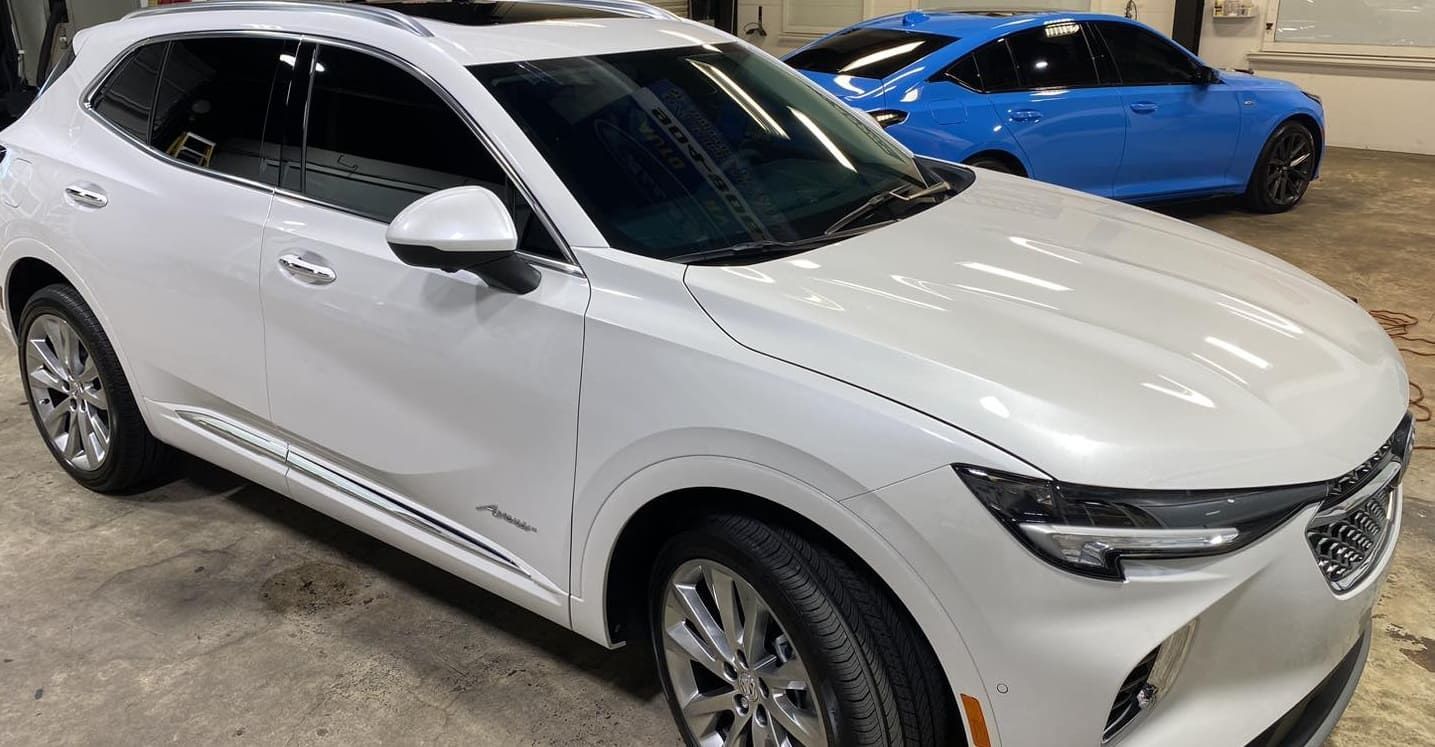Carbon vs. Ceramic Tint: What’s Best for Hot Climates?
Understanding Window Tinting
Window tinting involves applying a thin film to a vehicle's windows to reduce heat, glare, and UV radiation. Not only does it enhance the aesthetic appeal, but it also offers practical benefits like increased privacy and protection from harmful sun rays. Understanding the science and application of window tinting can help you appreciate its value and select the best type for your needs.
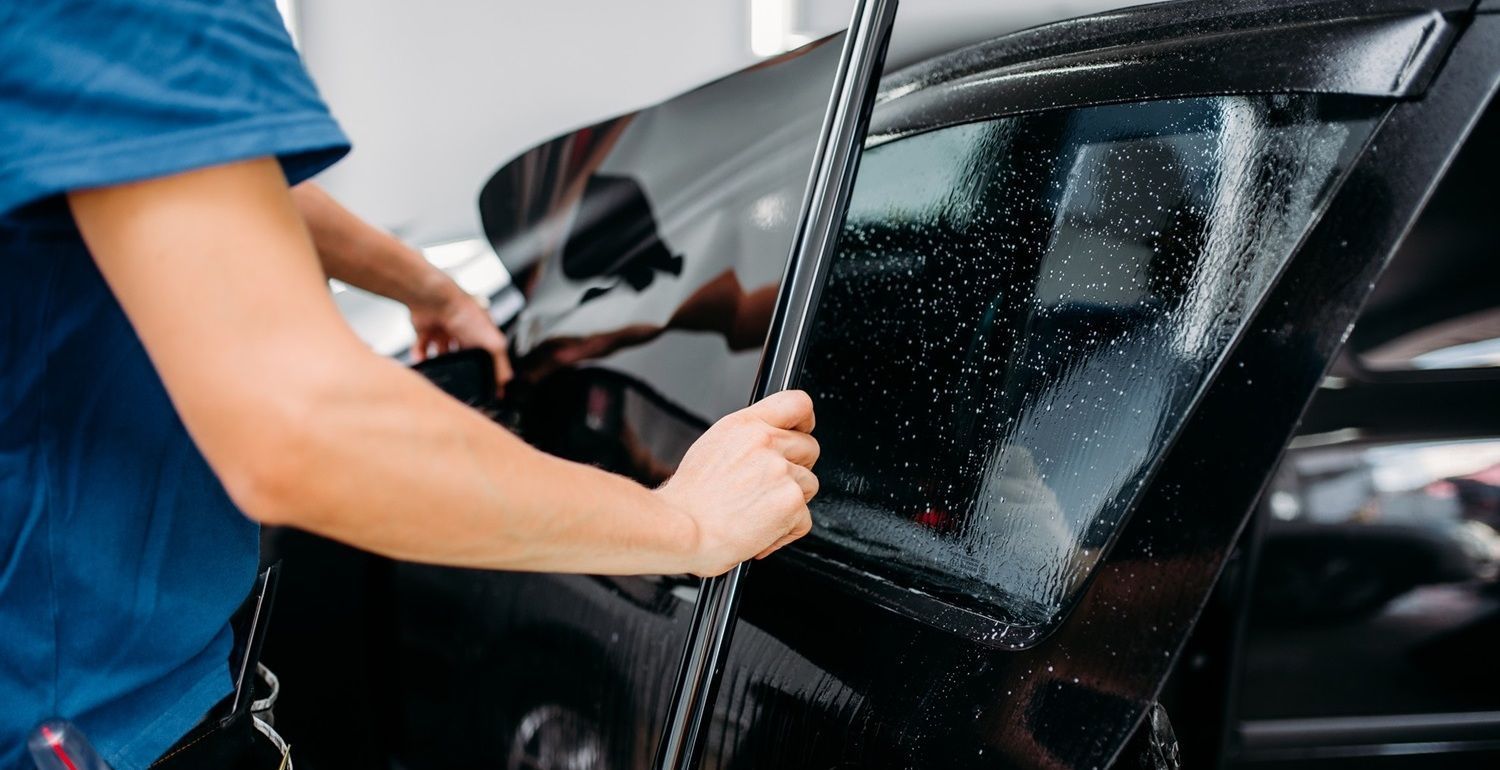
The Science Behind Window Tinting
Window tints work by reflecting or absorbing sunlight, using special particles embedded within the film. These particles can be metallic, carbon-based, or ceramic, each offering different levels of heat and UV protection. The technology involved in creating these films is sophisticated, allowing them to maintain clarity while providing substantial protection against solar energy.
Types of Window Tint Films
There are several types of window tint films available, each with distinct features. The main categories include dyed, metalized, hybrid, carbon, and ceramic. Dyed films are basic and affordable, providing minimal heat reduction. Metalized and hybrid films improve heat rejection but can interfere with electronic signals. Carbon and ceramic films offer advanced protection without these drawbacks, making them popular choices for modern vehicles.
The Benefits of Window Tinting
Window tinting provides numerous benefits beyond just blocking out sunlight. It enhances vehicle aesthetics, boosts privacy, and can even improve fuel efficiency by reducing the need for air conditioning. Additionally, by blocking harmful UV rays, window tints protect both the vehicle's interior from fading and the occupants from potential skin damage.
What is Carbon Window Tint?
Carbon window tint comprises carbon particles that effectively block infrared light, which is responsible for the heat you feel from the sun. This type of tint is known for its matte finish, which doesn't fade over time. Understanding the composition and advantages of carbon tint can help you determine if it's the right choice for your vehicle.
Composition and Technology
Carbon tints are made from a unique technology that involves embedding carbon particles into the film. This technology is non-metallic, ensuring that it does not interfere with electronic devices such as GPS and cell phones. The carbon particles are excellent at blocking infrared radiation, which is the main component of sunlight that contributes to heat buildup inside a vehicle.
Performance and Efficiency
Carbon tints are highly effective at reducing the interior temperature of a vehicle. They can block a significant portion of the sun's heat, making them ideal for hot climates. This efficiency translates into less strain on the vehicle's air conditioning system, potentially improving fuel economy. Moreover, carbon tints provide a balanced level of visibility, allowing for safe driving in various lighting conditions.
Environmental Impact
Carbon window tints are considered environmentally friendly compared to other types. The manufacturing process for carbon tints typically involves fewer harmful chemicals, and the tints themselves contribute to energy savings by reducing the need for air conditioning. For eco-conscious consumers, choosing carbon tint can be a responsible choice that aligns with sustainable practices.
Benefits of Carbon Tint
Carbon tints offer several advantages that make them a popular choice among vehicle owners. Understanding these benefits can help you weigh the pros and cons when deciding between carbon and ceramic tints.
Heat Rejection
Carbon tint effectively reduces heat inside the car, making it a great choice for hot climates. By blocking a significant amount of infrared radiation, carbon tints help maintain a cooler interior, enhancing driving comfort even during the hottest days. This heat rejection capability reduces reliance on air conditioning, which can lead to better fuel efficiency and lower emissions.
Durability and Longevity
One of the standout features of carbon tint is its durability. Unlike dyed tints that can fade over time, carbon tints maintain their color and performance for years. This longevity ensures that the vehicle remains stylish and protected without the need for frequent replacements. Carbon tints are resistant to scratches and bubbling, further extending their lifespan and maintaining their effectiveness.
Cost-Effectiveness
Generally more affordable compared to ceramic tints, carbon tints offer a good balance of performance and price. For those on a budget, carbon tints provide excellent heat rejection and durability without the higher cost associated with ceramic options. This cost-effectiveness makes them a practical choice for many vehicle owners looking to enhance their car's comfort and appearance without breaking the bank.
What is Ceramic Window Tint?
Ceramic window tint is made using non-metallic, non-conductive ceramic particles. It is the most advanced form of window tinting and offers superior performance in several areas. Exploring the unique properties and benefits of ceramic tint can help you decide if it's worth the investment.
Advanced Material Composition
Ceramic tints utilize nano-ceramic technology, which involves the infusion of microscopic ceramic particles into the film. This advanced material composition allows ceramic tints to provide superior heat rejection and UV protection without affecting visibility or electronic signals. The ceramic particles are highly effective at reflecting and absorbing solar energy, making them an excellent choice for high-performance tinting.
Superior Performance Metrics
Ceramic window tints surpass most other types of tints in terms of performance. They offer exceptional heat rejection, blocking a significant percentage of solar heat and nearly all UV radiation. This superior performance ensures a cooler vehicle interior and protection against sun damage for both the occupants and the car's interior components. Additionally, ceramic tints maintain optical clarity, providing excellent visibility in all lighting conditions.
Non-Conductive Benefits
One of the key advantages of ceramic tints is their non-metallic nature, which prevents interference with electronic devices. Unlike metalized tints, ceramic films do not disrupt signals from cell phones, GPS, or radio. This non-conductive property makes ceramic tints ideal for modern vehicles equipped with advanced electronics and communication systems.
Benefits of Ceramic Tint
Ceramic tints offer numerous benefits that make them a top choice for vehicle owners seeking the best in window tinting technology. Examining these advantages can guide you in making a well-informed decision.
Superior Heat Rejection
Ceramic tint provides excellent heat rejection, surpassing most other types of tint. By blocking up to 50% of solar heat, ceramic tints keep the car interior significantly cooler, enhancing comfort and reducing the need for air conditioning. This superior heat rejection is particularly beneficial in hot climates, where maintaining a comfortable cabin temperature is crucial.
UV Protection and Skin Safety
Ceramic tints block up to 99% of harmful UV rays, protecting your skin and the car's interior. This high level of UV protection reduces the risk of skin damage and fading of the vehicle's upholstery and dashboard. By safeguarding against UV exposure, ceramic tints contribute to the long-term preservation of both the vehicle's interior and the health of its occupants.
Enhanced Visibility and Clarity
Ceramic tints offer better clarity and visibility, especially important for night driving. The advanced technology used in ceramic films ensures that they do not compromise visibility while providing maximum protection. This enhanced clarity makes driving safer and more enjoyable, allowing for clear views of the road and surroundings at all times.
Carbon vs. Ceramic: A Comparison
When deciding between carbon and ceramic tints, several factors should be considered, particularly if you live in a hot climate. Understanding these factors can help you choose the best tint for your vehicle and lifestyle.
Heat Rejection Capabilities
Ceramic tints are superior in heat rejection, making them ideal for extreme climates. They can block a significant amount of infrared heat, keeping the car interior cooler. While carbon tints also offer good heat rejection, ceramic tints provide the highest level of thermal protection, which can be a deciding factor for those living in particularly hot regions.
UV Protection Differences
Both carbon and ceramic tints offer UV protection, but ceramic tints provide a higher level of protection, which can prevent skin damage and protect the car's interior from fading. This extra UV blocking capability is crucial for long-term vehicle preservation and occupant health, making ceramic tints a preferred choice for those prioritizing maximum protection.
Durability and Lifespan
Carbon tints are known for their durability and do not fade over time. Ceramic tints, while slightly more expensive, are also highly durable and resistant to fading, offering long-term performance. The choice between the two often depends on budget and specific needs, but both options ensure years of effective service with proper care and maintenance.
Cost Considerations
Cost is often a decisive factor. While ceramic tints offer superior performance, they come at a higher price point. Carbon tints provide a more budget-friendly option without sacrificing too much in terms of performance. Evaluating your budget and performance requirements can help determine which tint offers the best value for your investment.
Aesthetic Appeal and Style
The appearance of the tint can also influence your decision. Carbon tints have a sleek, matte finish, while ceramic tints are more neutral in appearance, allowing for a more natural look. Depending on your aesthetic preferences and the style you wish to achieve for your vehicle, one type of tint may be more appealing than the other.
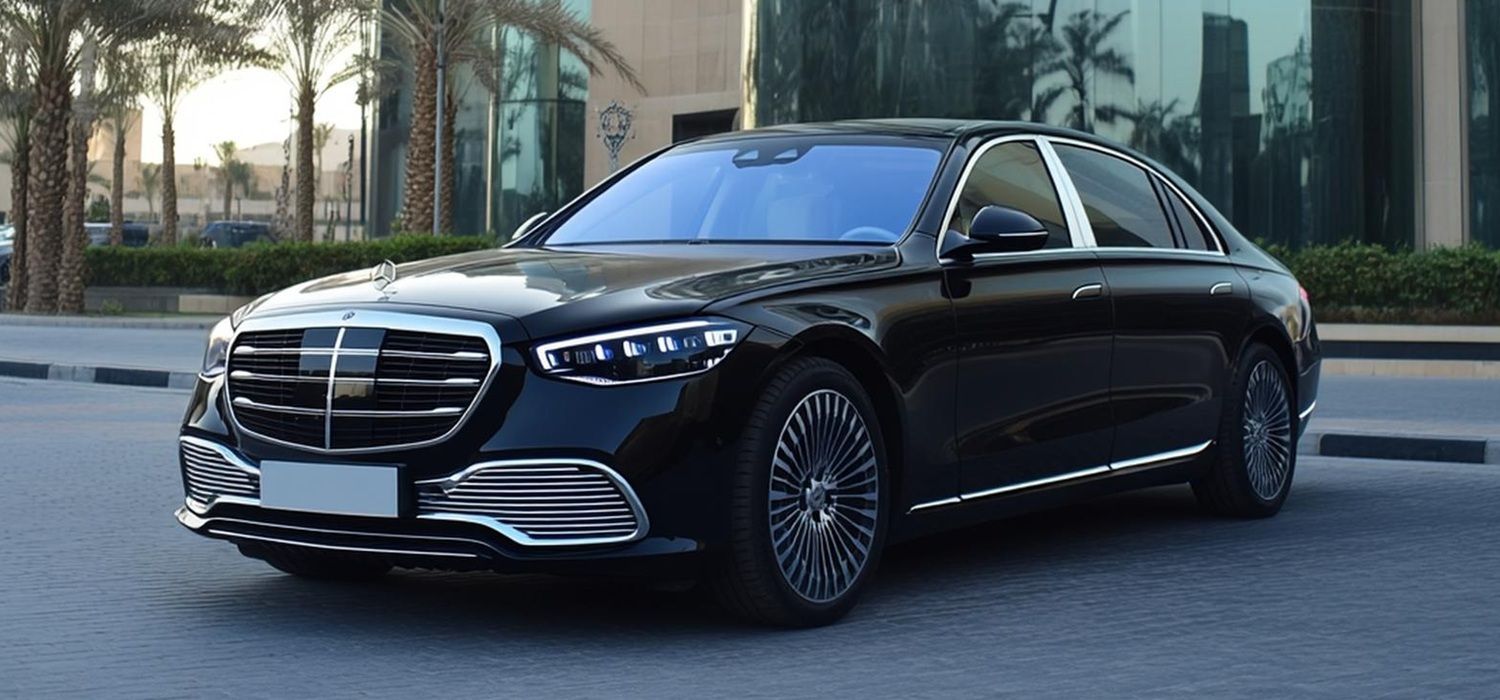
The Impact of Tinting on Driving Experience
Choosing the right tint can enhance your driving experience by improving comfort and safety. Exploring how tints affect various aspects of driving can help you understand their importance beyond mere aesthetics.
Comfort and Temperature Control
A quality window tint can make a significant difference in interior temperature, reducing the need for air conditioning and improving fuel efficiency. By maintaining a cooler cabin, tints contribute to a more comfortable driving environment, especially during long journeys in hot weather. This temperature control not only enhances comfort but also reduces the vehicle's energy consumption.
Glare Reduction and Safety
Both carbon and ceramic tints reduce glare, making driving more comfortable and safer, especially during bright daylight or oncoming headlights at night. By minimizing glare, tints improve visibility, allowing for safer navigation in various lighting conditions. This reduction in glare is particularly beneficial for drivers with light sensitivity or those frequently driving in sunny or reflective environments.
Privacy and Security Enhancements
Tinted windows can enhance privacy by making it difficult for outsiders to see inside your vehicle. This added layer of security can deter potential thieves by concealing valuables from view. Additionally, the increased privacy offers peace of mind, allowing occupants to feel more secure and less exposed while inside the vehicle.
Choosing the Best Option
When deciding between carbon and ceramic window tints, consider the following: Evaluating these factors can help you select the most suitable tint for your needs and preferences.
Climate Considerations
For extremely hot climates, ceramic tint is the best option due to its superior heat rejection. Its ability to maintain a cooler interior makes it ideal for regions with intense sunlight and high temperatures. However, for those in milder climates, carbon tints may provide sufficient protection at a lower cost.
Budget Constraints and Affordability
If cost is a concern, carbon tint provides a good balance of performance and affordability. While ceramic tints offer the best protection, their higher price may not be justifiable for everyone. Assessing your budget and weighing it against the benefits of each type can help in making a financially sound decision.
Personal Preference and Style
Consider the aesthetic appeal and the level of visibility you desire. Depending on your style preferences, you may favor the matte finish of carbon tints or the neutral appearance of ceramic tints. Personal taste, combined with performance needs, will guide you to the tint that best complements your vehicle and personal style.
The Role of Professional Installation
Regardless of the type of tint you choose, professional installation is crucial. A skilled installer ensures that the tint is applied correctly without bubbles or imperfections, maximizing its effectiveness and longevity. Understanding the importance of professional installation can enhance the overall satisfaction and performance of your chosen tint.
Quality Assurance and Expertise
Professional installers bring expertise and experience to the tinting process, ensuring that the film is applied evenly and securely. They are trained to handle various types of tints and vehicles, guaranteeing a high-quality finish that meets industry standards. Choosing a professional installer reduces the risk of errors that could compromise the effectiveness and appearance of the tint.
Warranty and Customer Support
Many professional installation services offer warranties on their work, providing peace of mind and protection against potential issues. This warranty typically covers defects in the film or installation, ensuring that any problems are addressed promptly and at no additional cost. Access to customer support and service further enhances the value of professional installation.
Long-Term Benefits and Maintenance
Proper installation by a professional ensures the longevity and effectiveness of the tint. It minimizes the risk of bubbling, peeling, or fading, allowing the tint to perform optimally over time. Additionally, professionals can provide guidance on maintenance and care, helping you preserve the tint's appearance and functionality for years to come.
Why Choose Llumar Auto Window Tinting?
Llumar is a trusted name in the window tinting industry, known for high-quality products and professional installation. Choosing Llumar ensures you receive a tint that not only looks good but performs exceptionally well. Llumar's reputation for excellence and customer satisfaction makes it a reliable choice for those seeking top-tier window tinting solutions.
Conclusion
In hot climates like Florida, window tinting is not just a luxury but a necessity for comfort and protection. At ALL ABOUT TINT in St. Augustine, FL, a Trusted LLumar SelectPro Dealer and premier car window tinting installer near you, we specialize in high-performance films that keep your vehicle cooler, safer, and more stylish all year long.
Both carbon and ceramic tints offer excellent benefits, but ceramic tints stand out for their superior heat rejection and UV protection. For those working within a tighter budget, carbon tints still provide impressive performance and durability. Understanding the differences between these options helps you choose the film that best fits your needs, lifestyle, and budget.
At ALL ABOUT TINT, we guide you through every step, ensuring your vehicle gets the right tint for optimal comfort, aesthetics, and protection. Whether you prioritize affordability or maximum performance, selecting the right tint will make every drive more enjoyable and secure under Florida’s intense sun.
Contact ALL ABOUT TINT in St. Augustine, FL today for your free estimate and experience why drivers throughout the area trust our LLumar SelectPro-certified team for professional car window tinting that delivers exceptional results and long-lasting quality.
FAQs About Carbon vs Ceramic Tint for Hot Climates
Which tint is better for hot climates, carbon or ceramic?
Ceramic tint is the best option because it blocks more infrared heat and UV rays.
Does carbon tint still perform well in heat?
Yes, but it offers moderate heat rejection compared to ceramic films.
Why does ceramic tint work better in high temperatures?
It uses nano-ceramic particles that reflect and absorb heat more efficiently.
Is ceramic tint more expensive than carbon tint?
Yes, but it lasts longer and provides superior comfort in hot weather.
Does ceramic tint affect visibility?
No. It keeps windows clear while maintaining strong heat rejection.
Will carbon tint fade faster than ceramic?
Yes. Carbon tint can fade or lose effectiveness sooner in intense sunlight.
Does ceramic tint protect car interiors better?
Yes. It blocks nearly all UV rays, preventing fading and cracking.
Is ceramic tint worth the upgrade in hot climates?
Absolutely. It delivers better cooling, comfort, and durability in extreme heat.



